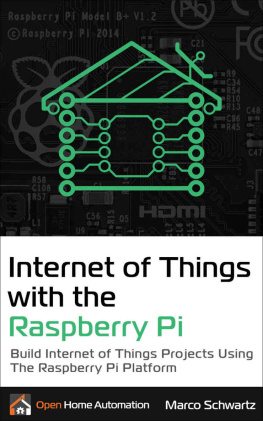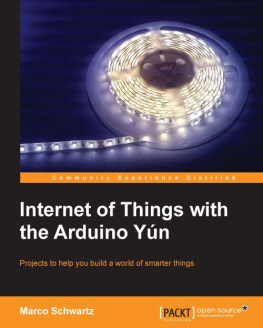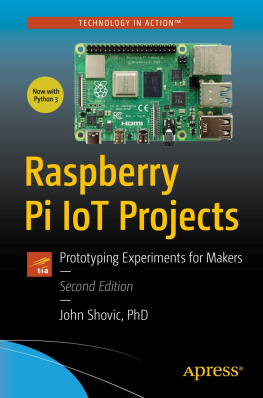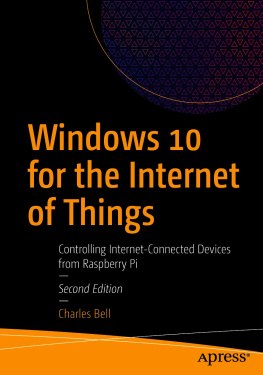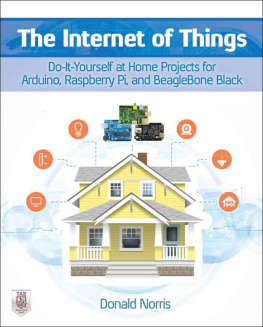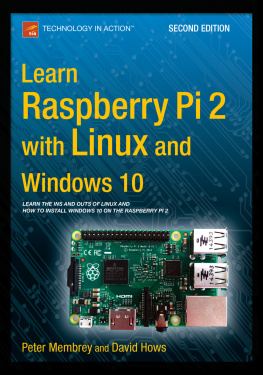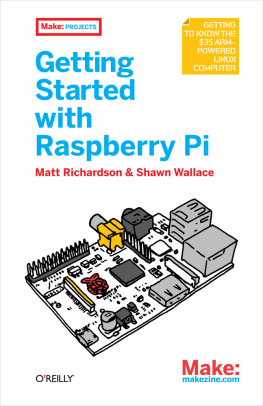This book is for all the people who want to use the Raspberry Pi platform to build Internet of Things projects.
This book is also for the people who are currently building Internet of Things projects with other platforms like Arduino, and who want to extend their knowledge, for example by using the Raspberry Pi for more advanced Internet of Things projects.
Finally, this book is also for people who just want to learn more about how to use the Raspberry Pi and get knowledge in electronics & programming.
The book is organized in 3 projects. We will start with a quite basic project, and then gradually move to more complex projects using the Raspberry Pi.
In the first chapter, Building a Cloud Data Logger, we are going to connect a basic temperature & humidity sensor to the Raspberry, and monitor the data from an online dashboard, that is accessible from anywhere in the world.
In the second chapter, Controlling a Lamp From Anywhere, we are going to connect a lamp to the Raspberry Pi. Then, we will configure an online dashboard so this lamp can be switched on & off from any web browser.
Finally, in the third chapter, Making a Cloud Security Camera, we are going to make our own DIY version of a security camera, so you can monitor your home for example from anywhere in the world.
To use this book, you will need to have some basic skills in programming & electronics. It is recommended that you have some basic experience with JavaScript and with client/server interactions.
On the electronics side, a basic experience is required, as you will need to connect sensors to the Raspberry Pi. However, with the detailed explanations that you will find in every chapter of the book, you will be able to follow the different projects without difficulties.
To use all the projects found in this book, you will also need a fully functioning Raspberry Pi, configured with the Raspbian Linux distribution, and connected to the Internet. If you need help doing that, you will find all the required resources on the official Raspberry Pi webite:
https://www.raspberrypi.org/
In this book, I will also usually access my Raspberry Pi via SSH, from my own computer. You can learn more about how to do that here:
https://www.raspberrypi.org/documentation/remote-access/ssh/
However, you can perfectly do all the projects of this book directly on your Raspberry Pi, for example if it is connected to an external display.
In this first project of the book, we will learn how to use the Raspberry Pi to monitor some data remotely, from anywhere in the world. This is a project that you can use for any monitoring applications, as you will be able to change the sensors used in the project by your own sensors, to monitor the data that you need.
We will start by connecting a simple temperature & humidity sensor to your Raspberry Pi. Then, we will use a service called Dweet.io to store data in the cloud. Finally, we will integrate these measurement in the cloud to another service called Freeboard.io. This one will allow us to graphically monitor the data coming from your Raspberry Pi.
First, you will need a Raspberry Pi. Basically, every model of Raspberry Pi will work, so you can use Raspberry Pi A/A+, B/B+/2, it will works just as well.
Then, you will need all the supporting hardware to make the Pi work: a microSD card, a microUSB power supply, and an HDMI cable if you want to connect the Pi to a screen. If you want to use WiFi for this project, you will also need an USD WiFi dongle.
You will also need a DHT11 sensor to measure the temperature & humidity.
Finally, you will need a Raspberry Pi cobbler kit, jumper wires and breadboard to make the connections between the Raspberry Pi and the sensor.

